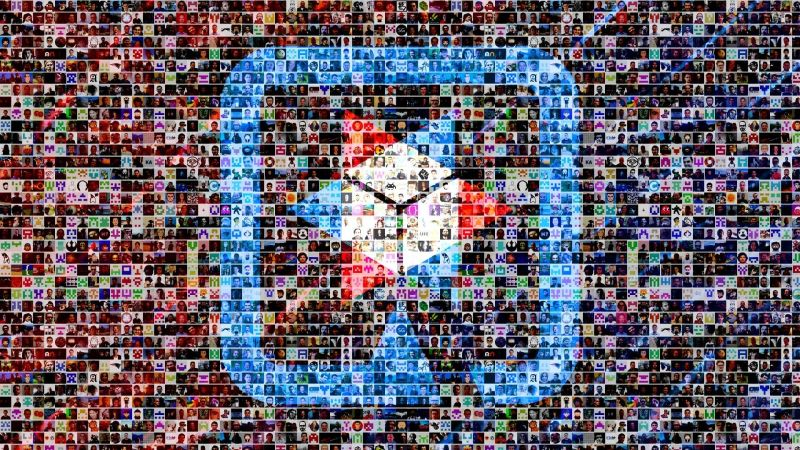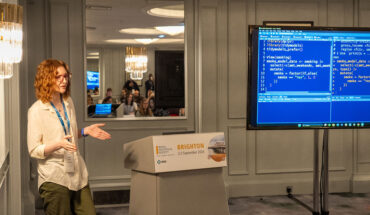This article reflects on the evolution and future of Quarkus, Red Hat’s next-generation Java framework designed to optimize applications for cloud-native environments.
When I joined Red Hat, it was through the JBoss acquisition in 2006, an era when JBoss was the first open source application server competing head-to-head with those produced by the industry giants like IBM and Oracle. Red Hat acquired JBoss, our team became the Middleware (now Application Services) division of Red Hat, and JBoss Enterprise Application Platform (JBoss EAP) became a core Red Hat offering, ranking for many years as the company’s second-largest product after Red Hat Enterprise Linux (RHEL).
Fast forward to 2019. After about 15 years of JBoss’s success, the cloud was changing everything, and Java needed an upgrade. That’s where Quarkus came in.
Our team of extremely talented engineers envisioned Quarkus as the next-generation runtime created for a new wave of applications that would run in the cloud, on Kubernetes and on Red Hat OpenShift. The goals for Quarkus were to let developers use their familiar APIs, make Java applications truly cloud-native, with superior performance characteristics, while providing an unmatched developer experience that brings joy.
Reimagining Java for the cloud
At its core, Quarkus is a modern Java framework designed to optimize applications for cloud-native environments. This is made possible by an innovative architecture that enables application initialization at build time, allowing us to remove a lot of unnecessary code from the resulting runtime executable.
Quarkus applications typically start five times faster and take about half as much memory compared to applications written with competing frameworks. On top of that and as an optional next step, Quarkus integrates incredibly well with GraalVM native image, so that Quarkus applications can be compiled directly into native code with the flip of a switch, reducing the memory footprint by up to five times, and accelerating start-up by as much as 50 times. This allows writing lightweight and responsive microservices perfect for cloud environments that can potentially boot in milliseconds. It also enables serverless deployments, edge computing, even writing Kubernetes operators and command-line utilities.
To give developers maximum flexibility, Quarkus provides over 700 extensions, created by contributors within the open source community. These extensions make it incredibly easy for developers to integrate with a wide range of tools and platforms—whether it’s connecting to databases, messaging systems and vector stores, or integrating with Podman and OpenShift/OpenShift AI. This modularity means you can focus on the core functionality of your application, knowing that Quarkus extensions have you covered for almost any scenario.
I truly believe that Quarkus is the best Java framework currently available, and I am enormously happy and proud to be a contributor! Performance, developer productivity, Dev mode, Dev Services, Dev UI, continuous testing—everybody can find something they value. So it’s no surprise that the community grows—people want to be a part of this success.
—Martin Stefanko, Principal Software Engineer, Red Hat
Red Hat build of Quarkus
A year after its public community debut in 2019, interest for Quarkus spiked, and soon Red Hat would offer a productized version of Quarkus in the form of the Red Hat build of Quarkus. Today, Red Hat build of Quarkus is offered as part of different bundles, including Red Hat Application Runtimes, Red Hat OpenShift Container Platform, and RHEL.
Quarkus and Red Hat build of Quarkus enable our community users, customers, and partners to write efficient cloud-native, mission-critical applications. You can check out some of the dozen user stories from around the world in the Quarkus blog and our Quarkus Insights YouTube channel. For inspiration, check out also this public reference from Switzerland: “We have cut development time by 3 with the Red Hat build of Quarkus.”
Quarkus’s growing ecosystem: The 1,000 contributor milestone
What’s particularly rewarding about Quarkus is its foundation as a Red Hat-backed, community-driven project. In just five years, Quarkus has reached a significant milestone of over 1,000 community contributors (Figure 1). The project now has roughly as many contributors as the incumbent Spring Boot framework that was started well before Quarkus, in 2014.

This kind of growth speaks to the energy and innovation in the Java developer community, especially as developers see that Quarkus can address both their performance needs and their desire for a streamlined, enjoyable coding experience. Quarkus’s Maven downloads, a key measure of adoption, shows over a million downloads each month, and that number has doubled annually. This signals that Java developers are eager to embrace a modernized, cloud-native Java.
So why do developers become contributors? The motivations are as varied as the contributions themselves. Some developers encounter challenges in their applications that existing solutions don’t solve efficiently. They recognize Quarkus as a way to address those issues without massive rewrites or platform shifts. It’s a common pattern to come to Quarkus to fix a performance issue with your current framework, but stay for the superior developer experience.
What is so powerful about the Quarkus community is the responsiveness of the core development team to not only help, but redirect the question to an expert who can help. Never be afraid of your idea or bug being too small to report. Small things getting fixed or added is what makes a good product great!
—Emil Lefkof, Chief Technology Officer, KSM Technology Partners
Others might find Quarkus’s flexibility intriguing—they might contribute an extension or fix a bug because they want to tailor the technology to their specific needs. For many, the appeal of working on a cutting-edge open-source project is also about gaining skills and credentials in a technology that’s rapidly gaining ground.
Infusing intelligence into Java applications
Quarkus isn’t just about modernizing Java; it’s about enabling it to shine in entirely new areas. With the unprecedented demand for AI-infused applications, we’ve joined forces and integrated with the popular LangChain4j framework, enabling developers to connect effortlessly with all the leading LLM API/model providers and Vector stores. With Quarkus, developers can seamlessly add intelligence to their applications and implement advanced RAG (retrieval augmented generation) patterns using a familiar programming model, without replatforming or learning a new language.
Learn more: How to use LLMs in Java with LangChain4j and Quarkus
This shift is crucial because Java remains the backbone of mission-critical software globally, from banking systems to healthcare to aviation. Java’s 10+ million developers now have direct access to generative AI capabilities, and this opens up endless possibilities for innovation across every industry. Imagine a new generation of intelligent applications—ones that summarize, translate, or offer personalized assistance—all built on Java and deployed effortlessly in the cloud.
What’s next for Quarkus?
Quarkus’s success has only sharpened our vision. We announced that we’ll be moving Quarkus to the Commonhaus Foundation, affirming our commitment to making it a truly community-driven project. By transitioning to a neutral foundation, we aim to remove any barriers for companies that might have viewed Quarkus as solely a Red Hat project. This move ensures that Quarkus can continue to thrive, supported by a broad base of contributors from multiple organizations. Check out other projects supported by the Commonhaus Foundation.
Our vision for Quarkus goes beyond technical performance; it’s about setting a new standard for Java development in the cloud, and expanding the scope of what’s possible. With our community growing and more developers embracing Quarkus every day, we’re looking forward to an increased adoption and expansion of the Quarkus ecosystem, aka the Quarkiverse.
How to get involved
If you love open source and Java, this is a great place to contribute. There’s so much to do, from documentation to quickstarts to extensions. Just ask for a good first issue in the extension that interests you and dive in. It’s very rewarding—you’ll learn a lot, have fun, and feel welcomed and appreciated!
—Katia Aresti, Infinispan Core Developer, Red Hat
If you’re in the Java space and want to be part of this exciting journey, I encourage you to dive into the Quarkus community. Whether you’re looking to modernize your applications or tap into the latest in AI capabilities, Quarkus has the tools you need. Join us and help shape the future of Java for the cloud. With Quarkus, you’re not just adopting a framework—you’re joining a movement dedicated to shaping the future of Java for the cloud, supported by an amazing team of talented contributors. Let’s continue to revolutionize Java, together.
Explore Quarkus e-books and activities on Red Hat Developer:
- Quarkus in Action: Download a preview of this upcoming book from Jan Martiška and Martin Štefanko, a practical guide to building resilient and scalable, cloud-native, enterprise Java applications using the Quarkus framework.
- Quarkus for Spring Developers: In this e-book, Java Champion Eric Deandrea introduces Quarkus to Java developers, with a special eye for helping those familiar with Spring’s conventions make a quick and easy transition.
- Build and deploy a Quarkus application to OpenShift in minutes: In this activity, discover how you can go from initial app idea to prototype code in as little as five minutes. You’ll scaffold a Quarkus application, build a container image locally using Podman Desktop, and then see how to install, run, and test the application in the Developer Sandbox from the command line.
- Browse our Quarkus tag for tutorials and more.
Last updated:
December 3, 2024





